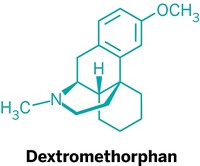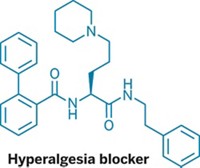Advertisement
Grab your lab coat. Let's get started
Welcome!
Welcome!
Create an account below to get 6 C&EN articles per month, receive newsletters and more - all free.
It seems this is your first time logging in online. Please enter the following information to continue.
As an ACS member you automatically get access to this site. All we need is few more details to create your reading experience.
Not you? Sign in with a different account.
Not you? Sign in with a different account.
ERROR 1
ERROR 1
ERROR 2
ERROR 2
ERROR 2
ERROR 2
ERROR 2
Password and Confirm password must match.
If you have an ACS member number, please enter it here so we can link this account to your membership. (optional)
ERROR 2
ACS values your privacy. By submitting your information, you are gaining access to C&EN and subscribing to our weekly newsletter. We use the information you provide to make your reading experience better, and we will never sell your data to third party members.
Pharmaceuticals
Hormone Mimics Make Progress On The Long Path To Becoming Obesity Or Diabetes Drugs
Small molecule improves indicators of diseases in mice; peptide moves into human clinical trials
by Carmen Drahl
November 4, 2013
| A version of this story appeared in
Volume 91, Issue 44
Obesity and type 2 diabetes are still scourges, but effective treatments may come from mimicking hormones that regulate metabolism, two independent reports show. In one study, Richard D. DiMarchi of Indiana University, Bloomington, and colleagues made a hybrid peptide with elements from GLP-1 and GIP, two glucose-controlling hormones in the gut. This hybrid was more effective than currently approved medications at controlling blood glucose in animals, including monkeys. A study of the hybrid involving about 50 people with obesity and diabetes concluded that injections of it are safe: Few patients experienced the nausea commonly caused by this type of medication (Sci. Transl. Med. 2013, DOI: 10.1126/scitranslmed.3007218). Roche holds the license for the peptide. Meanwhile, in earlier-stage work, researchers in Japan mimicked adiponectin, a hormone secreted by fat cells that regulates glucose levels and fatty acid breakdown. The team, led by Takashi Kadowaki of the University of Tokyo, synthesized AdipoRon, a small molecule that activates two adiponectin receptors. AdipoRon had benefits similar to adiponectin in mice engineered to have diabetes (Nature 2013, DOI:10.1038/nature12656). It also prolonged life spans of diabetic mice on a high-fat diet. AdipoRon can be taken orally, unlike the hybrid peptide, but its half-life is only one hour.




Join the conversation
Contact the reporter
Submit a Letter to the Editor for publication
Engage with us on Twitter